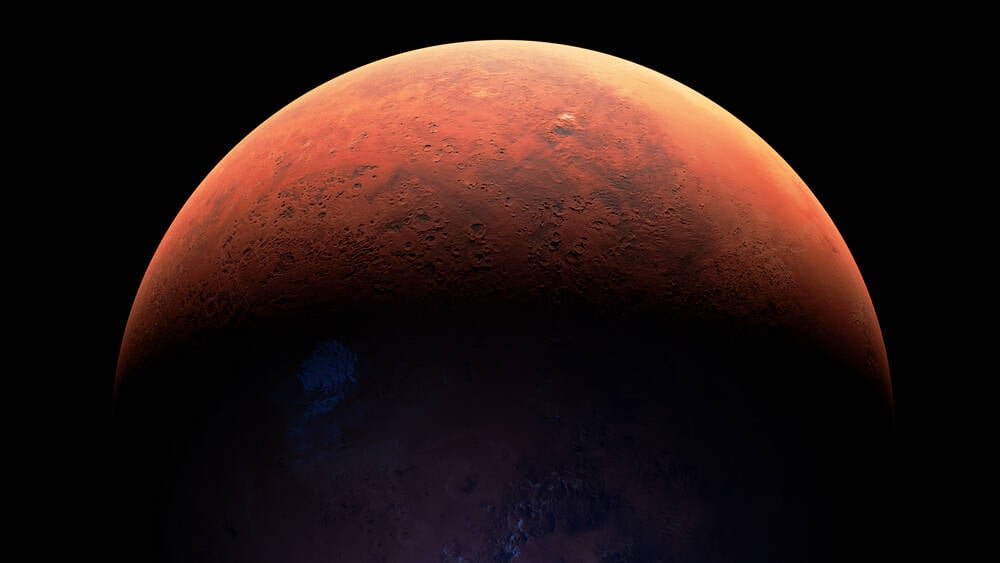- Get link
- X
- Other Apps
- Get link
- X
- Other Apps

Mars: A Once Desert Planet Peppered with Intermittent Oases, New Data Suggests
For years, scientists have been piecing together the puzzle of Mars's past, a past that hints at a warmer, wetter world than the cold, arid landscape we see today. Now, groundbreaking research based on data from the Curiosity rover suggests that Mars was once a fluctuating desert environment punctuated by sporadic oases of water. This paints a fascinating picture of the Red Planet's evolution and sheds light on why it ultimately became the desert it is today.
A team of researchers, spearheaded by Edwin Kite from the University of Chicago, has uncovered compelling evidence for carbon dioxide cycling on Mars. Their findings, primarily drawn from Curiosity rover data, point to the existence of hidden carbonates within Gale Crater. This discovery is potentially game-changing, offering a crucial piece of the puzzle in understanding why Mars transitioned from a potentially habitable planet to its current state.
Key Findings and Hypotheses:
- Fluctuating Environment: Mars was not uniformly wet, but rather experienced cycles of wet and dry periods, creating intermittent oases within a larger desert landscape.
- Carbon Dioxide Cycling: The team modeled a scenario where increased solar luminosity melted water on Mars, leading to more liquid water.
- Carbonate Formation: This liquid water then interacted with atmospheric carbon dioxide, leading to the formation of carbonates in rocks. This process trapped the carbon, reducing the greenhouse effect.
- Volcanic Activity: Lower volcanic activity on Mars, compared to Earth, meant that the trapped carbon dioxide wasn't efficiently returned to the atmosphere.
- Orbital Changes: Changes in Mars's orbit also contributed to the fluctuating desert/oases state.
- Atmospheric Loss: Over billions of years, the planet's atmosphere leaked away, further lowering atmospheric pressure and causing more evaporation.
- Triple Point: Eventually, the surface pressure dropped below the triple point of water, making liquid water unstable on the surface.
The Secret Locked in Martian Rocks
The research hinges on the understanding that, just like on Earth, atmospheric carbon dioxide on Mars can be stored in rocks as carbonates. The team built a climate model based on the assumption that the carbonates found in Gale Crater reflect the planet's climatic cycles over a staggering 3.5 billion years.
As the paper published in Nature highlights, the sedimentary rocks within Gale Crater record past climates that featured surface and shallow-subsurface liquid water. "Those waters were intermittent, spatially patchy and discontinuous, and continued remarkably late in Mars's history," the researchers hypothesize.
How Carbonate Formation Drove Climate Change
The research suggests that carbonate formation on Mars played a pivotal role in driving changes in the planet's climate. The model proposes that as solar luminosity increased, more water became available, triggering carbonate formation. This process, in turn, extracted carbon dioxide from the atmosphere, weakening the greenhouse effect and leading to a colder, drier planet.
The researchers explain: "Chaotic orbital forcing modulated wet–dry cycles. The negative feedback restricted liquid water to oases and Mars self-regulated as a desert planet." They also note that while their model uses snowmelt as the water source, the feedback mechanism could also work with groundwater.
The End Result: A Cold, Dry Mars
Ultimately, the loss of Mars's atmosphere caused it to approach water's triple point, resulting in a decline in liquid water and rendering the surface environment less habitable. This model helps explain why Martian oases were patchy and intermittent.
The Need for Further Exploration
While this research offers compelling insights, the team emphasizes that more surface missions are crucial to validate their assumptions. "We assume that the carbonate content found at Gale is representative, and as a result, we present a testable idea rather than definitive evidence," the paper concludes.
This study provides a fascinating glimpse into the complex history of Mars, highlighting the interplay of factors that shaped its evolution. It reminds us that even seemingly barren landscapes hold secrets waiting to be unlocked, secrets that could revolutionize our understanding of planetary habitability and the potential for life beyond Earth. The exploration continues, and with each new discovery, the story of Mars becomes richer and more compelling.
Tags: Mars, Red Planet, Curiosity rover, Gale Crater, Carbon dioxide, Water, Solar luminosity, Desert environment, Martian probe, Hidden carbonates
Source: https://www.theregister.com/2025/07/04/mars_was_once_a_desert/
Carbon dioxide
Curiosity rover
Desert environment
Gale Crater
Hidden carbonates
Mars
Martian probe
Red Planet
Solar luminosity
Water
- Get link
- X
- Other Apps
Comments
Post a Comment